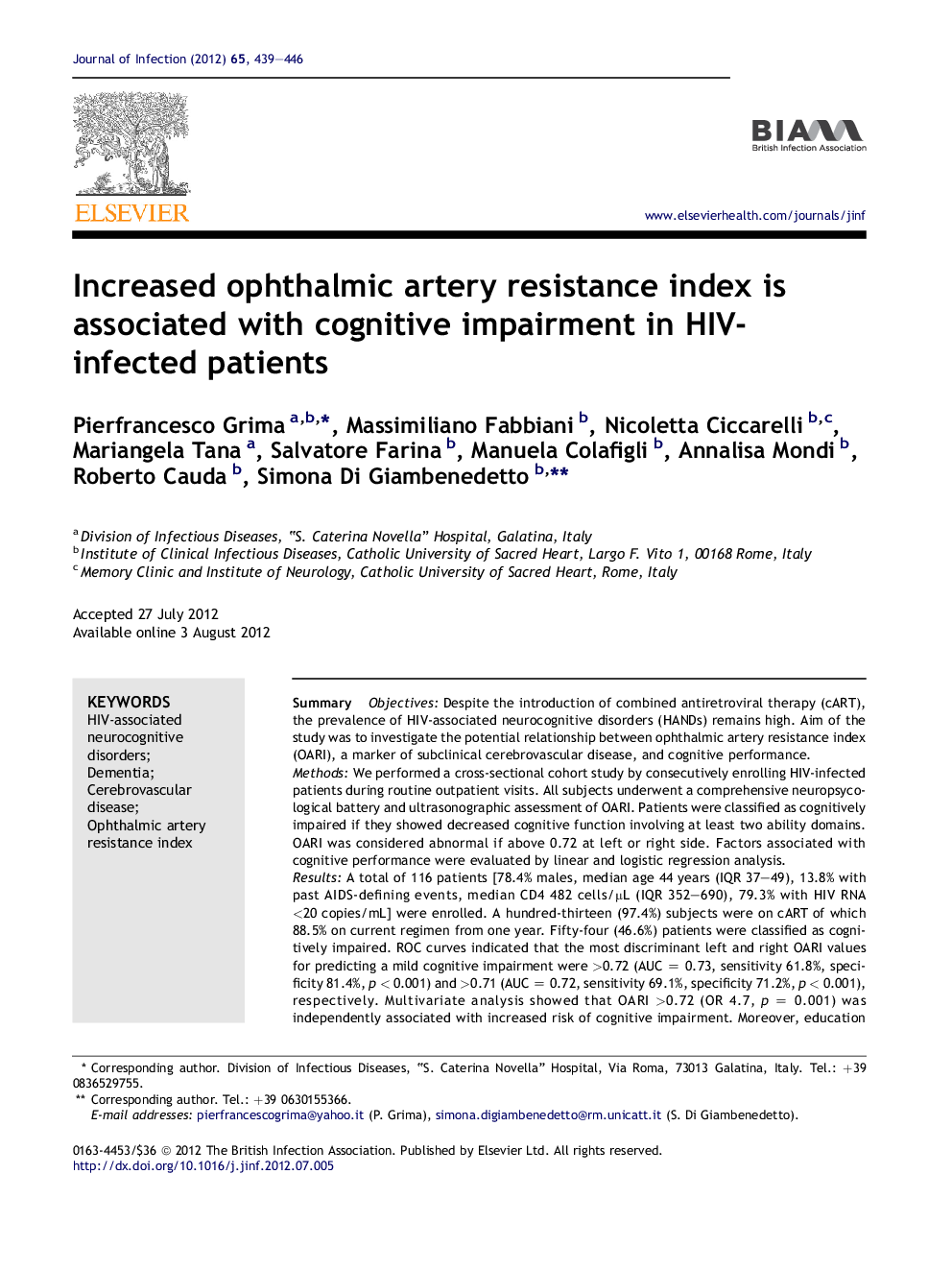| کد مقاله | کد نشریه | سال انتشار | مقاله انگلیسی | نسخه تمام متن |
|---|---|---|---|---|
| 3374670 | 1219641 | 2012 | 8 صفحه PDF | دانلود رایگان |

SummaryObjectivesDespite the introduction of combined antiretroviral therapy (cART), the prevalence of HIV-associated neurocognitive disorders (HANDs) remains high. Aim of the study was to investigate the potential relationship between ophthalmic artery resistance index (OARI), a marker of subclinical cerebrovascular disease, and cognitive performance.MethodsWe performed a cross-sectional cohort study by consecutively enrolling HIV-infected patients during routine outpatient visits. All subjects underwent a comprehensive neuropsycological battery and ultrasonographic assessment of OARI. Patients were classified as cognitively impaired if they showed decreased cognitive function involving at least two ability domains. OARI was considered abnormal if above 0.72 at left or right side. Factors associated with cognitive performance were evaluated by linear and logistic regression analysis.ResultsA total of 116 patients [78.4% males, median age 44 years (IQR 37–49), 13.8% with past AIDS-defining events, median CD4 482 cells/μL (IQR 352–690), 79.3% with HIV RNA <20 copies/mL] were enrolled. A hundred-thirteen (97.4%) subjects were on cART of which 88.5% on current regimen from one year. Fifty-four (46.6%) patients were classified as cognitively impaired. ROC curves indicated that the most discriminant left and right OARI values for predicting a mild cognitive impairment were >0.72 (AUC = 0.73, sensitivity 61.8%, specificity 81.4%, p < 0.001) and >0.71 (AUC = 0.72, sensitivity 69.1%, specificity 71.2%, p < 0.001), respectively. Multivariate analysis showed that OARI >0.72 (OR 4.7, p = 0.001) was independently associated with increased risk of cognitive impairment. Moreover, education (β = −0.18, p = 0.005), Zung depression score (β = +0.05, p = 0.021) and an abnormal OARI (β = +1.46, p = 0.002) were independently associated with an increased number of pathological performances. Evaluating separately each cognitive domain, an abnormal OARI confirmed an independent association with lower performance in attention and executive functions (p = 0.003) and in psychomotor speed (p = 0.010).ConclusionsIncreased OARI was associated with lower cognitive performance in HIV-infected patients. These findings suggest a potential role of subclinical cerebrovascular disease in the pathogenesis of HAND.
Journal: Journal of Infection - Volume 65, Issue 5, November 2012, Pages 439–446